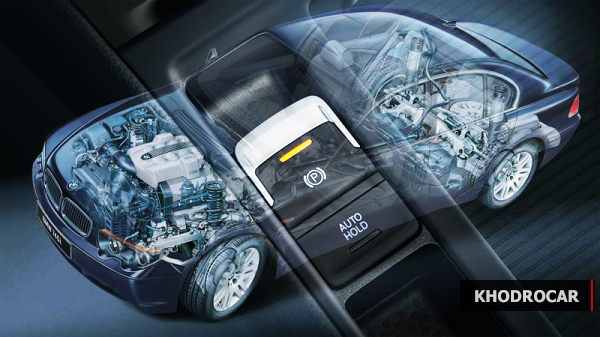Here's How Electronic Parking Brakes Work
Quickly fading are the days when we were free to dream of cranking a lever connected to cables that would squeeze the brakes and break traction, as more and more modern cars replace cabled emergency and parking brake systems with simply a button. But there’s a lot of good reasons for it, so here’s how electronic parking brakes work.
Khodrocar - Back in the early 2000s BMW was in a revolutionary phase of car design, and with the introduction of the all-new E65 7 Series, it also introduced its internet-age interior including the first electronic parking brake system, where the function was now activated by a little button to the left of the steering wheel.
Where before most cars activated their parking brakes either by a lever next to the driver’s seat or by pressing down on a little locking pedal in the driver’s footwell, which were both connected mechanically by cables leading to the rear brakes, a new age of production cars had been introduced utilizing the convenience of electronics.

The user-end of most electronic braking systems is fairly straightforward and uniform, where the driver can activate the parking brake with the push of a button, but the business end where the actual friction happens can take a few different forms.
The first of the two most common electronic parking brake (EPB) systems still involves mechanical cables, but instead of having the cables run up the length of the car to be tugged on by the driver, the cable from each brake caliper leads to a remote motor.
The motor is either controlled by its own electronic control unit, or by the car’s control unit. When the EPB button is pushed, the signal is sent to the motor to pull on the cable, which squeezes the brake pads down onto the disk and the holds the car in place.
The second most common type of EPB system dumps mechanical cables entirely. The caliper-integrated braking system uses two little motors attached to each rear brake caliper, with each motor pushing the caliper piston which squeezes the pads to the disk. The animation below shows how the piston operates:
In the press release for the E65 7 Series, BMW sang the electronic parking brake’s praises as both a convenience and a safety feature. The electronic parking brake allowed for activation anytime the car came to a standstill, which caused less worry when stopped on a hill or in creeping traffic, and if held down, it also acted as a stabilizing emergency brake.
Another added advantage was protecting the vehicle "from unauthorized use,” as the brakes would be locked when the engine was switched off and only unlocked with the return of the electronic key. Other advantages of current-day electronic parking brake systems involve coordination with traction control systems and parking assist systems.
Source: Jalopnik
Latest News


